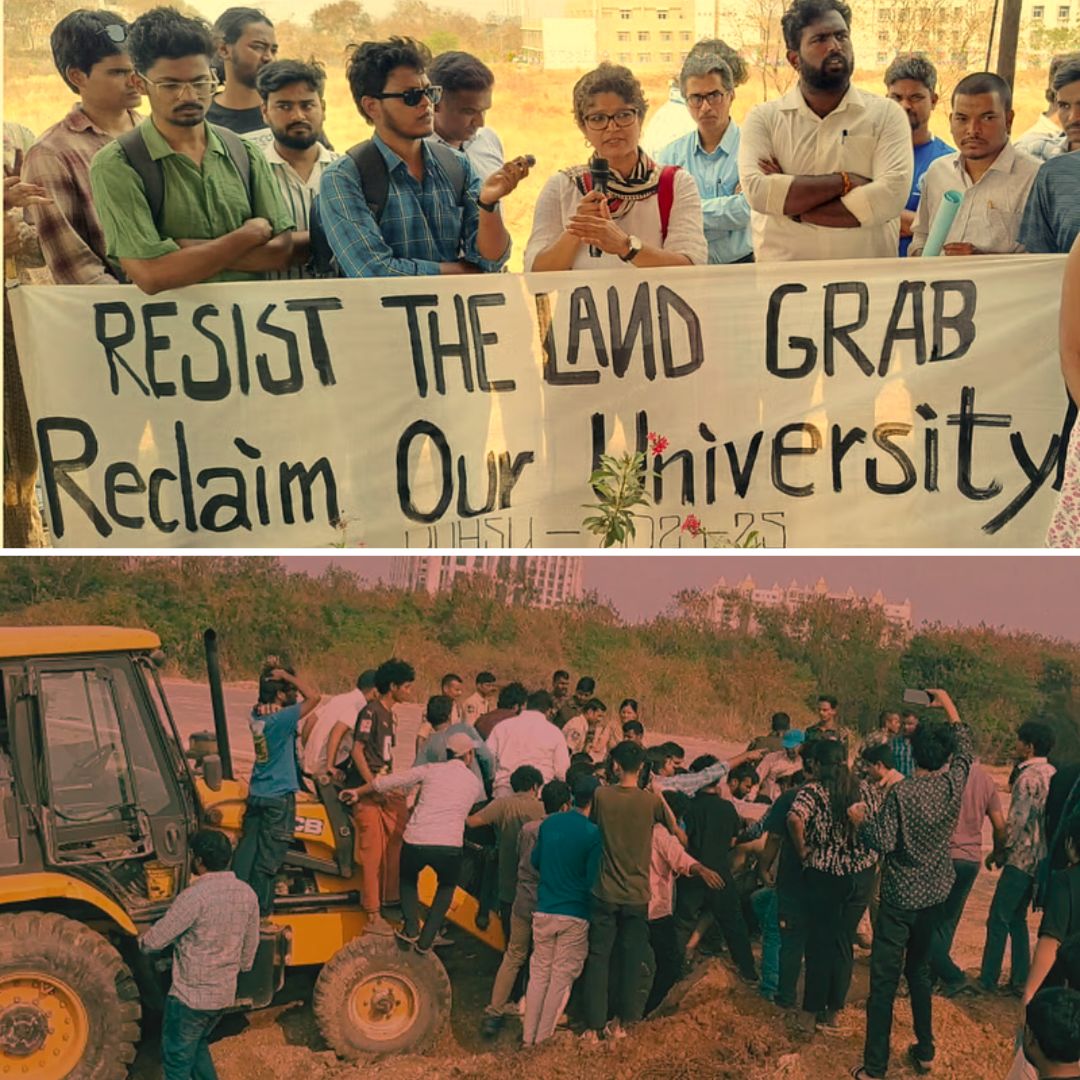The University of Hyderabad (UoH) is currently embroiled in significant unrest as students protest against the Telangana government’s controversial plan to auction 400 acres of land adjacent to the campus for the development of an IT park. The protests, which intensified on March 30, resulted in the detention of over 50 students, who were later released.
Students are raising alarms about potential environmental degradation and encroachment on university territory, while government officials maintain that the land does not belong to the university and is essential for state development. As bulldozers continue to clear the area, students have announced an indefinite boycott of classes and plan to escalate their protests.
Protests and Allegations of Police Excess
The protests erupted when students observed bulldozers clearing land in Kancha Gachibowli, a move that they perceive as a direct threat to their campus environment. In response to the clearing activities, many students rushed to the site, climbing onto the machinery and chanting slogans against police actions and government decisions.
The Cyberabad police responded by detaining approximately 52 students, accusing them of obstructing government work and assaulting personnel. Eyewitness accounts and videos circulating on social media depict aggressive police tactics, including dragging students into vans and alleged inappropriate conduct during detentions.
A representative from the University of Hyderabad Students’ Union (UoHSU) stated, “We just wanted to know why they are razing the forest land,” underscoring their demand for accountability and transparency from authorities regarding the land use.
Background: Environmental Concerns and Political Row
The Telangana government’s plans to develop the 400-acre land as part of its IT corridor initiative have sparked widespread criticism among students and environmental activists alike. Government officials assert that this land is legally owned by the state and has no ties to UoH.
However, students argue that this area serves as an ecological buffer zone vital for local flora and fauna, which could be irreparably harmed by bulldozing efforts. The UoHSU has expressed frustration over what they perceive as the university administration’s silence on these critical issues, demanding clarity on land use plans and comprehensive environmental assessments before any development occurs.
In a recent statement, a government spokesperson reiterated that no environmental clearance is necessary for development on this land, dismissing claims of encroachment as unfounded.
Community Response: Voices from Students and Faculty
In addition to student protests, faculty members have also voiced their concerns regarding the government’s plans. Several professors have joined students in calling for a halt to construction activities until a thorough environmental impact assessment is conducted.
This solidarity between students and faculty reflects a broader concern within the academic community about prioritising sustainable development over rapid urbanisation. One faculty member remarked, “Educational institutions should be sanctuaries for knowledge and ecological balance; we cannot allow commercial interests to jeopardise our environment.”
This sentiment resonates with many in the community who believe that preserving green spaces is crucial not only for ecological health but also for maintaining a conducive learning environment.
Candle March Protest at University of Hyderabad #SaveUoHLand pic.twitter.com/zWfEUM2Pc8
— All India OBC Students Association (AIOBCSA) (@aiobcsa) March 31, 2025
The Logical Indian’s Perspective
This situation highlights a critical intersection between development and environmental preservation. The heavy-handed approach of law enforcement against peaceful student protests raises serious concerns about democratic rights and civic engagement.
It is essential for authorities to foster dialogue with stakeholders rather than resorting to repression. We call for a transparent discussion regarding land use that respects both ecological integrity and community voices. The ongoing conflict at UoH serves as a reminder of the importance of balancing developmental goals with environmental stewardship.
How can we ensure that development efforts do not come at the cost of our environment? What measures can be taken to facilitate constructive dialogue between authorities and communities? Share your thoughts below!











